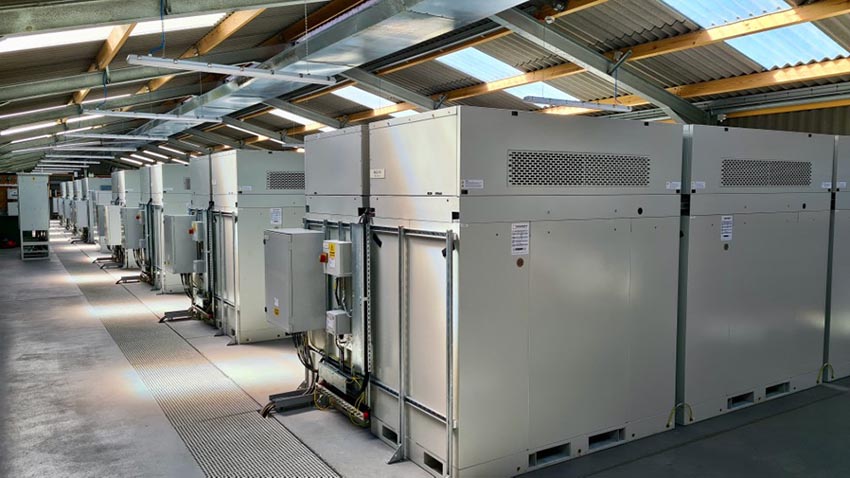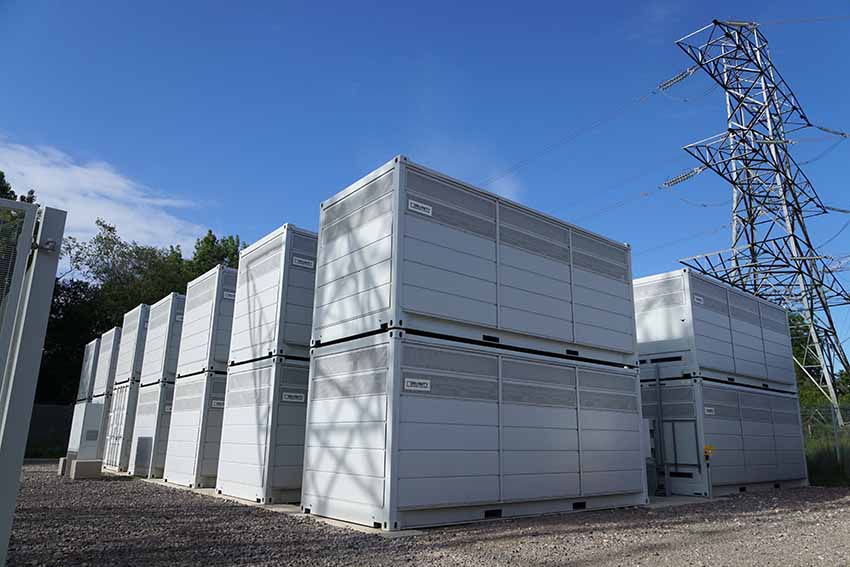Invinity is the world’s leading global manufacturer of vanadium flow batteries, the principal alternative to lithium-ion technology, for use in energy storage applications. They have a portfolio of more than 50 energy storage projects already in operation at commercial, industrial, and utility-scale sites worldwide.
Invinity’s batteries unlock low-cost, low-carbon renewable energy on demand for customers across the UK, mainland Europe, North America, Asia and Australasia. We work closely with developers, engineering firms and businesses to address their energy storage needs and help to accelerate global progress towards Net Zero.
Interview with Colin Boone, VP Worldwide Sales, Invinity Energy Systems.
Easy Engineering: What are the main areas of activity of the company?
Colin Boone: Invinity manufactures and deploys proven, market-leading vanadium flow batteries for energy storage which are sustainable, cost-effective and durable, unlocking low-carbon energy from the wind and sun on-demand. Our primary markets are the UK and Europe, North America and Australia, and we access other markets via our network of qualified resellers.
E.E: What’s the news about new products?
C.B: We have had three milestone announcements in recent months.
In December, Invinity confirmed its largest single market pipeline of new business – 270 MWh – in Taiwan through two new in-country resellers, and announced the Company’s largest ever single system sale – a 15 MWh vanadium flow battery – to Everdura Technology company.
In November, supported by the California Energy Commission and developer Indian Energy, Invinity announced it is building North America’s largest vanadium flow battery– a 10 MWh system, which is its most significant project in the US’s biggest energy storage market to date – to supply 100% renewable power and sustain critical operations for the Viejas Tribe of Kumeyaay Indians.
In June, Invinity launched the UK’s largest flow battery at the Energy Superhub, Oxford. At the centre of a project developed by EDF Renewables, the hybrid battery combines Invinity’s 2 MW / 5 MWh vanadium flow battery with a 50 MW / 50 MWh lithium-ion battery to create a system that can perform a range of services for the UK grid, with the ability to power over 6,000 homes for an entire day.

E.E: What are the range of products?
C.B: Invinity’s core product is the VS3-022 vanadium flow battery (VFB) which uses field-proven vanadium redox flow technology to store energy in an aqueous solution that never degrades, is non-flammable and requires little maintenance and upkeep. Designed for turnkey installation, the modular design means units can be double stacked, maximising the energy density of the storage system on site, and scaled to match specific storage project needs.
Systems can range in capacity from 1 to 40 MWh of storage and provide charge/discharge durations of 2-12+ hours with 100% depth of discharge. The VS3 has been engineered for durability – this means Invinity’s batteries can be charged and discharged as often as needed over their entire lifespan without warranty restrictions. This gives the technology a significant competitive advantage in terms of energy throughput against technologies such as lithium-ion, and results in an extremely low cost per MWh stored or discharged. In fact, a single VFB will deliver 3.8x the lifetime throughput of a comparably sized lithium battery.
E.E: At what stage is the market where you are currently active? And what can you tell us about market trends?
C.B: The energy storage market has matured rapidly over the past decade, and is expected to grow by a third every year to 2030 as countries around the world increasingly turn to renewable energy. It is also being supported by favourable legislation such as the EU’s REPowerEU plan and the US’s Inflation Reduction Act, both of which provide significant support including tax credits for deploying new battery storage projects. The UK and Germany are expected to be the largest European energy storage markets by 2030.
Lithium-ion batteries have been the most deployed technology to date, but high-profile fires in California, Australia, and Korea, are forcing tighter safety requirements and driving the development of alternative to lithium technologies that address safety, but also duration, as lithium batteries have so far only been proven to provide up to 2 hours of storage. Rising lithium prices and demand constraints are affecting existing project economics which is driving developers to look for alternatives such as vanadium flow batteries. At Invinity we have seen a marked increase in enquiries for our products.
With renewables now typically providing up to 30% of global generation, batteries are being asked to serve the grid near-constantly, storing excess renewable generation and discharging it back into the grid when needed, avoiding the need to fire up economically and environmentally inefficient legacy coal and gas generation assets to cover the shortfall. As the proportion of renewables and therefore the need for balancing increases, the energy throughput demands of batteries grow too, ensuring that high-throughput energy storage technologies such as vanadium flow batteries, capable of cycling multiple times per day without degrading, are rapidly becoming an intrinsic part of our energy system.

Storage systems now need to provide 2-24 hours of storage. The UK launched a Longer Duration Energy Storage competition to accelerate commercialisation of innovative projects in 2021 (Invinity won funding under Phase 1 of this project and Phase 2 funding is due to be announced in early 2023). In the US, California also has a Long-Duration Energy Storage program which is providing an initial $140m for innovative systems that support grid reliability and assist the state’s clean energy transition goals. These programs have been specifically designed to help integrate ever-more renewable energy onto the electric grid and manage the intermittent nature of renewable sources such as wind and solar.
E.E: What estimates do you have for 2023?
C.B: Continued high and volatile energy prices, as well as the desire to electrify industrial processes and fleets, will boost the incentive for consumers to rapidly deploy Distributed Energy Resources (such as individual solar/wind generators on smaller scale). With network upgrade queues backing up into the 2030s, deploying solar plus vanadium flow battery storage to manage additional loads from both ordinary and power-hungry fast-charging terminals will become a more attractive option, maintaining grid stability and accelerating the world’s transition to Net Zero.
The Ukraine conflict is likely to continue to affect gas availability in Europe, and an increasing frequency of extreme weather events, including a cold winter, is likely to lead to increased power demand that will cause blackouts and stress existing energy infrastructure.
Finally, more renewable projects will come online and further capacity addition is expected to remain strong in light of global carbon emission reduction targets. Further legislation that supports the co-location of energy storage alongside new and existing renewable developments is likely to materialise in 2023. However, with the increased rise in high profile lithium fires, and the tightening lithium supply chain, we expect to see further growth in demand for alternative to lithium energy storage solutions such as our own flow batteries.

